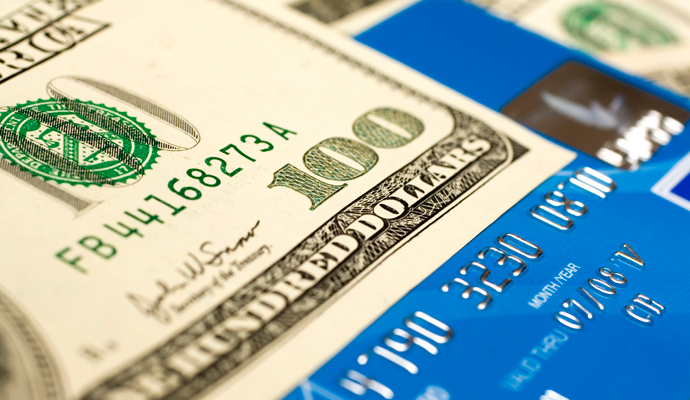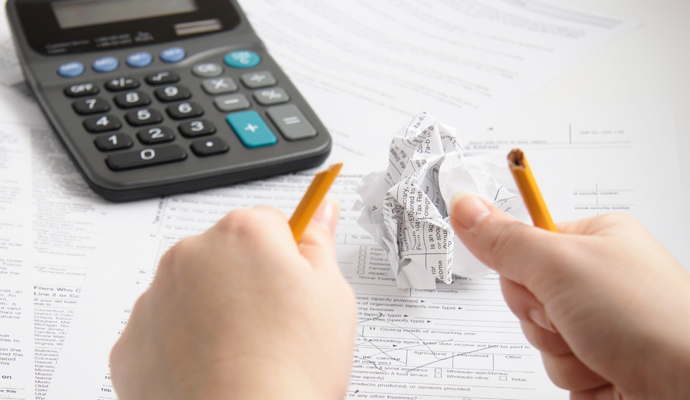The common debt mistake you can't afford to make
The perils of "pay, spend, pay"


When it comes to making debt payments, most of us probably fall into three categories: those who pay the minimum, those who try to pay a little more than the minimum — and those who are like Jason Vitug.
After Vitug graduated from college in 2003, he found himself saddled with $40,000 in combined student loan and credit card debt. That figure weighed on him so heavily that he took drastic measures to get rid of it quickly: At times that meant making double his minimum debt payments, to the tune of about $2,000 a month — on a $45,000 bank branch manager's salary.
"My primary goal at that stage was: 'I just want to pay it off. I don't want the debt looming,'" says 34-year-old Vitug, who recently launched the personal-finance resource site phroogal.com.
The Week
Escape your echo chamber. Get the facts behind the news, plus analysis from multiple perspectives.

Sign up for The Week's Free Newsletters
From our morning news briefing to a weekly Good News Newsletter, get the best of The Week delivered directly to your inbox.
From our morning news briefing to a weekly Good News Newsletter, get the best of The Week delivered directly to your inbox.
He lived with his brother and portioned the bulk of his paycheck toward the debt — enabling him to pay down all of his debt in about four years. But there were two potential problems: Vitug never stashed away any money into an emergency fund for a rainy day, nor did he rein in his lifestyle spending.
So when he decided to go back to business school, he had no savings to help cover tuition, forcing him to take out a new set of loans. The result? An even bigger debt hole of $80,000.
Vitug became caught up in what LearnVest refers to as the "pay, spend, pay" cycle, when well-intentioned debtors excessively overpay their loans or credit cards in order to help unburden themselves of debt faster. But, in doing so, they may deprive other areas of their budget — and may often run up their credit cards yet again because all of their cash is going toward loan payments.
"Pay, spend, pay" is similar to the pattern so many yo-yo dieters engage in: To lose massive amounts of weight quickly, they may suddenly change their eating habits or exercise until they drop. But while that helps them shed pounds at a fast clip, the diet remains unsustainable — and they ultimately pack on those pounds again.
A free daily email with the biggest news stories of the day – and the best features from TheWeek.com
But it is possible to help break the cycle. Our suggestion? Knowing how not to let your debt put you into an emotional tailspin — and creating a plan that helps make debt repayment a stable and consistent part of your budget.
The psychology behind the “pay, spend, pay” cycle

According to the latest figures, the average American household carries more than $15,000 in credit card debt, and recent college grads left school saddled with an average of $33,000 in student loans.
Translation: It's no wonder that so many of us get stuck in the "pay, spend, pay" cycle.
"People who do this think, 'If I can just get past my debt, look at how much I could save,' " says David Blaylock, CFP® with LearnVest Planning Services. "I'd have so much more money to build my emergency savings, to build my retirement savings."
But the reality is that if you're neglecting other parts of your money life as a result of your singular focus on squashing debt, you could find yourself with a depleted bank account when a true emergency arises — and possibly even out of cash for regular bills and expenses. Then you may end up relying on that high-interest credit card to survive the end-of-the-month pinch.
So why is it that folks seem unable to tackle their debt with more patience? As it turns out, there are several underlying psychological issues to blame for the smart — yet not-so-smart — urge to overspend on debt.
For starters, it's likely been hammered into our heads that having debt is a cardinal sin. And the stress associated with that sentiment is probably the biggest culprit behind the "pay, spend, pay" mentality, says Elizabeth Lombardo, a clinical psychologist and author of A Happy You: Your Ultimate Prescription for Happiness.
"Stress is a really powerful manipulator of our brains," Lombardo explains. "You hear how bad credit card debt is — and you have the impulse to just get rid of [it]." Aggravating the situation is a feeling of helplessness. "When we feel we can't make a difference, it can cause depression," she says. "By paying more, there's the sense that, 'O.K., I'm doing something.' "
According to Lombardo, perfectionists, in particular, may have a hard time dealing with having any kind of outstanding balance hanging over their heads — and be more inclined to abandon those well-intentioned high-debt payments the minute they do something imperfect, like pull out a credit card to pay for an emergency. It's akin to a dieter giving up on good eating habits once he slips up and eats that glazed donut.
So what's a yo-yo debtor to do?
How to help break the "pay, spend, pay" cycle

According to Blaylock, one key to avoiding the vicious "pay, spend, pay" cycle can actually be fairly simple: Focus on making steady and predictable payments toward your debt.
You can start by subtracting your fixed monthly costs — like rent and utilities — as well as any minimum debt payments from your take-home pay. The remainder is what's left to cover your flexible expenses, like groceries and entertainment, and your financial goal contributions — including what you put into savings as well as any extra payments toward your debt. Figure out what portion of that remainder can reasonably be dedicated to extra debt payments without sacrificing other goals, like building up an emergency fund.
While there's no set number that works for everyone, one guideline to consider is putting a combined 20 percent of your take-home pay toward financial goals.
This should leave you with a monthly debt-repayment amount that doesn't throw the rest of your budget out of whack or leave you unprepared for financial emergencies.
In fact, "To break the ['pay, spend, pay'] cycle, one of the most important things one can do is build an emergency savings account at the same time," adds Blaylock. This way, stuff like an unexpected visit to the E.R. shouldn't send you back into debt. Saving up one month's worth of take-home pay in an emergency fund should be a priority even before you decide to go above and beyond minimum debt payments.
After the one month of emergency savings is built up and you find that you can free up some money in your budget because you're willing to cut back in other areas — like limiting how often you eat out — then you can divide that extra amount between your various financial goals.
"50 percent of any extra income should go toward debt," suggests Blaylock. "Then consider dividing the remaining half equally between retirement savings and emergency savings" to help make sure all your major financial goals are getting some attention.
Vitug took this more measured approach when tackling his second round of major debt, calculating that he could put about $2,000 a month toward debt, as well as split another $1,500 between other savings goals, prioritizing retirement, padding an emergency fund, and even stashing some money in a vacation fund.
The result: He paid off his second round of debt in about five years, saved about $15,000 in an emergency fund, and devotes about 10 percent of his salary toward retirement.
The process of eradicating debt was a little slower this time around, but the feeling of having more financial security was priceless.
This story was originally published on LearnVest. LearnVest is a program for your money. Read their stories and use their tools at LearnVest.com.
More from LearnVest...
-
 The history of US nuclear weapons on UK soil
The history of US nuclear weapons on UK soilThe Explainer Arrangement has led to protests and dangerous mishaps
-
 Tea with Judi Dench: ‘touching’ show is must-watch Christmas TV
Tea with Judi Dench: ‘touching’ show is must-watch Christmas TVThe Week Recommends The national treasure sits down with Kenneth Branagh at her country home for a heartwarming ‘natter’
-
 Codeword: December 24, 2025
Codeword: December 24, 2025The daily codeword puzzle from The Week